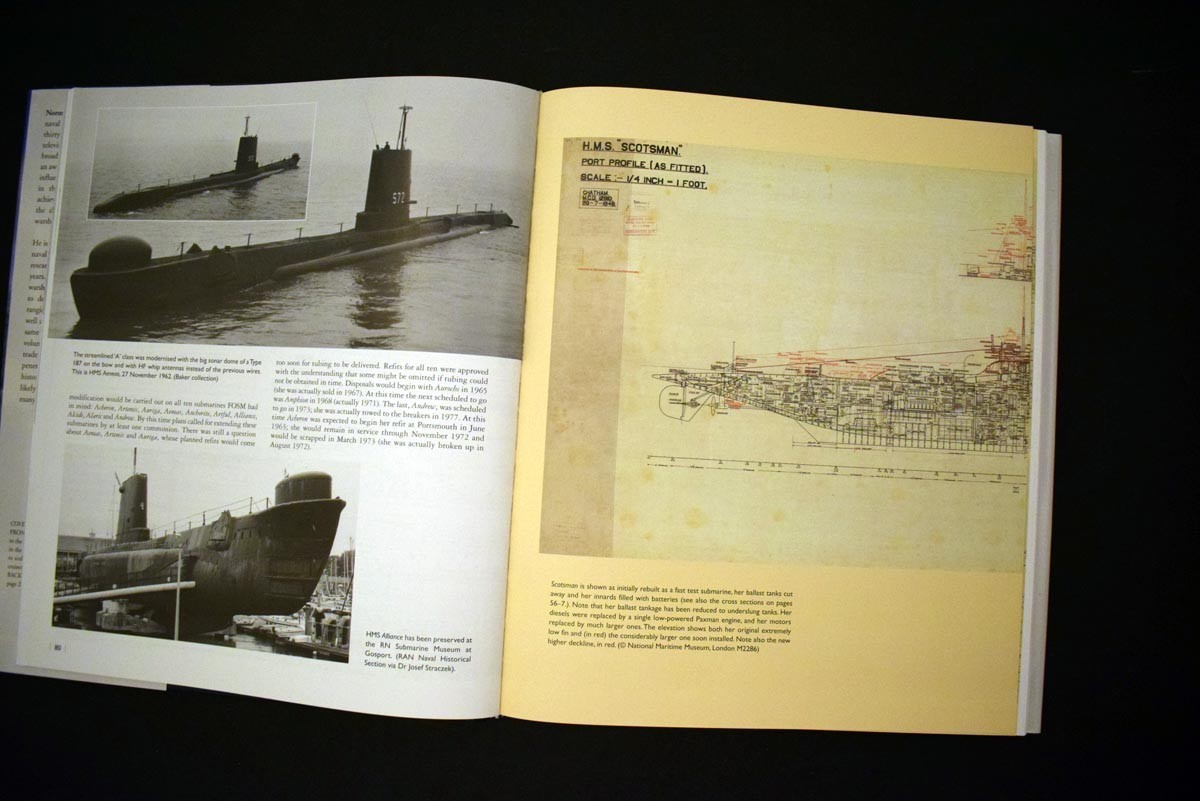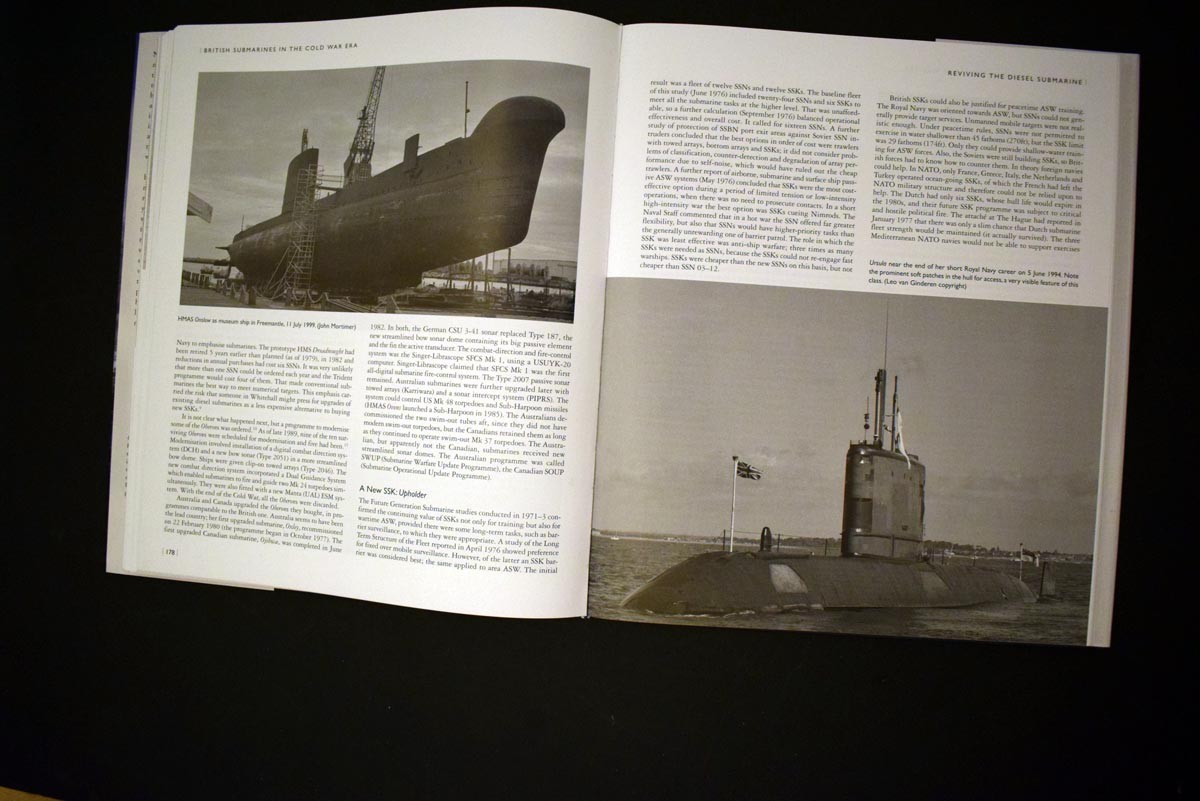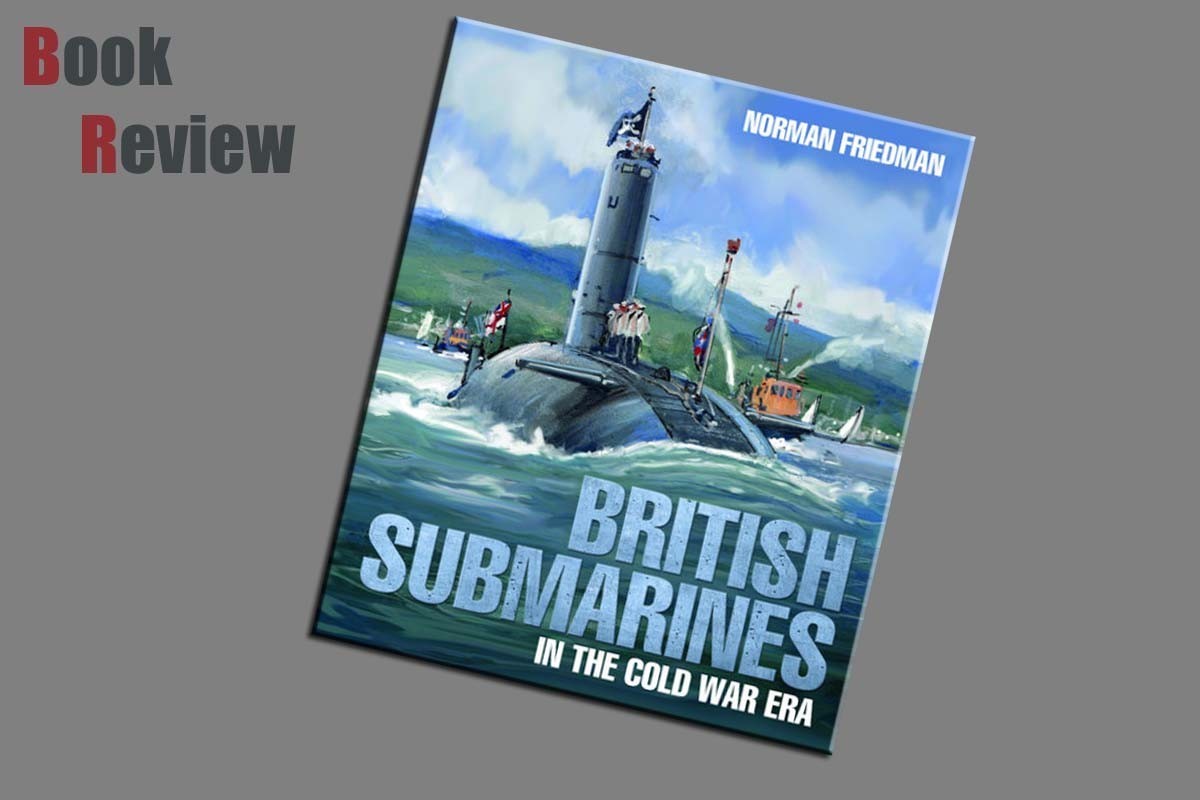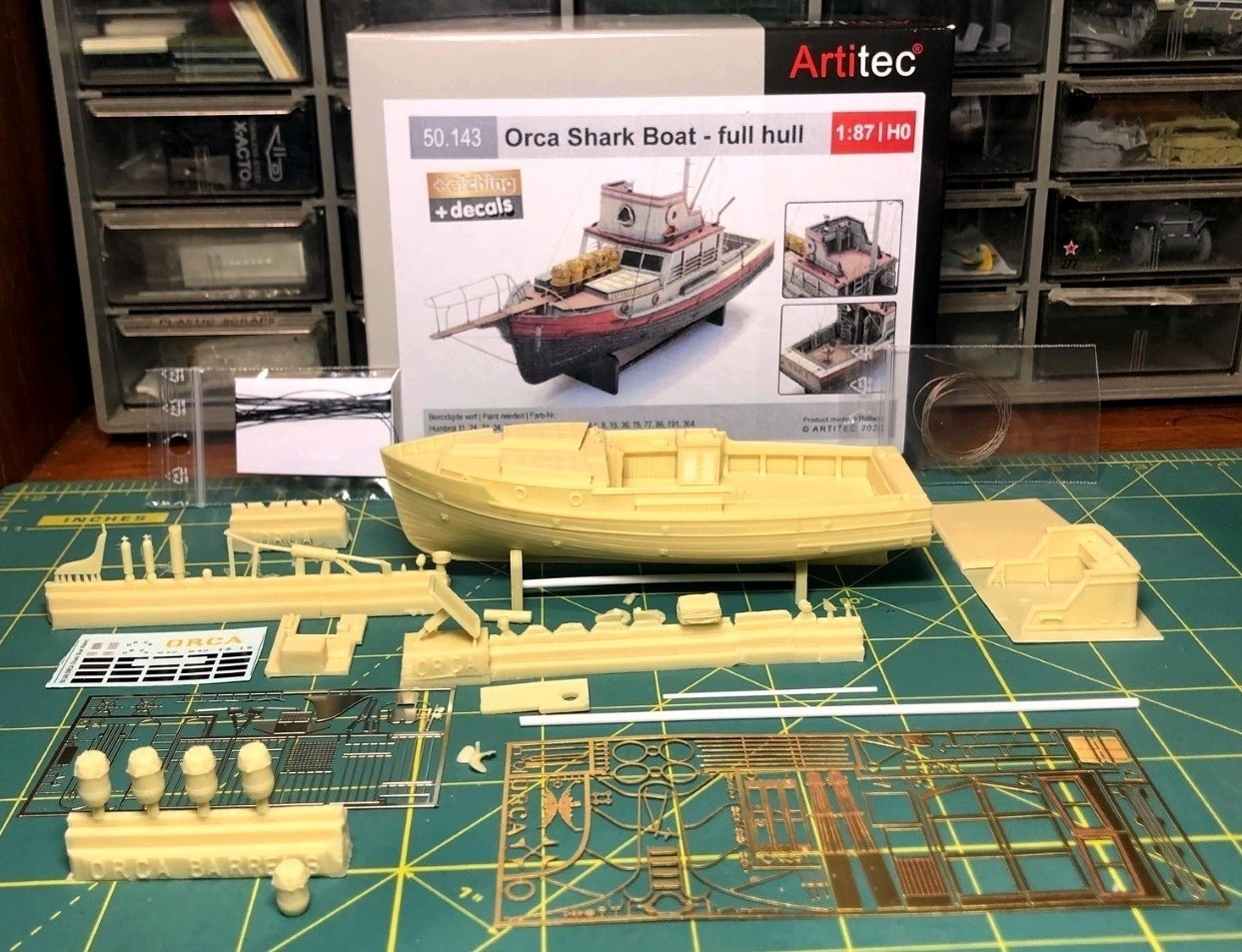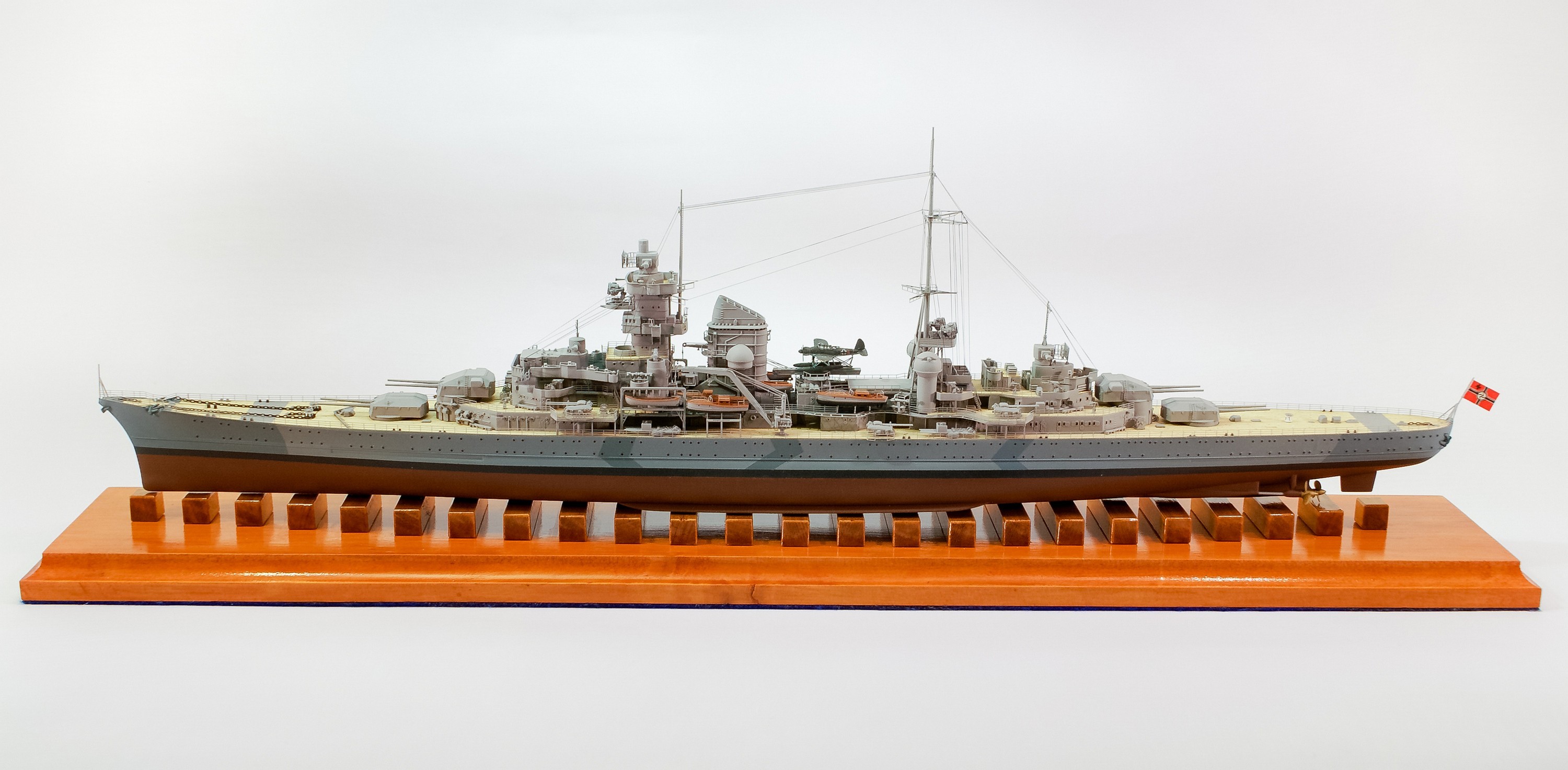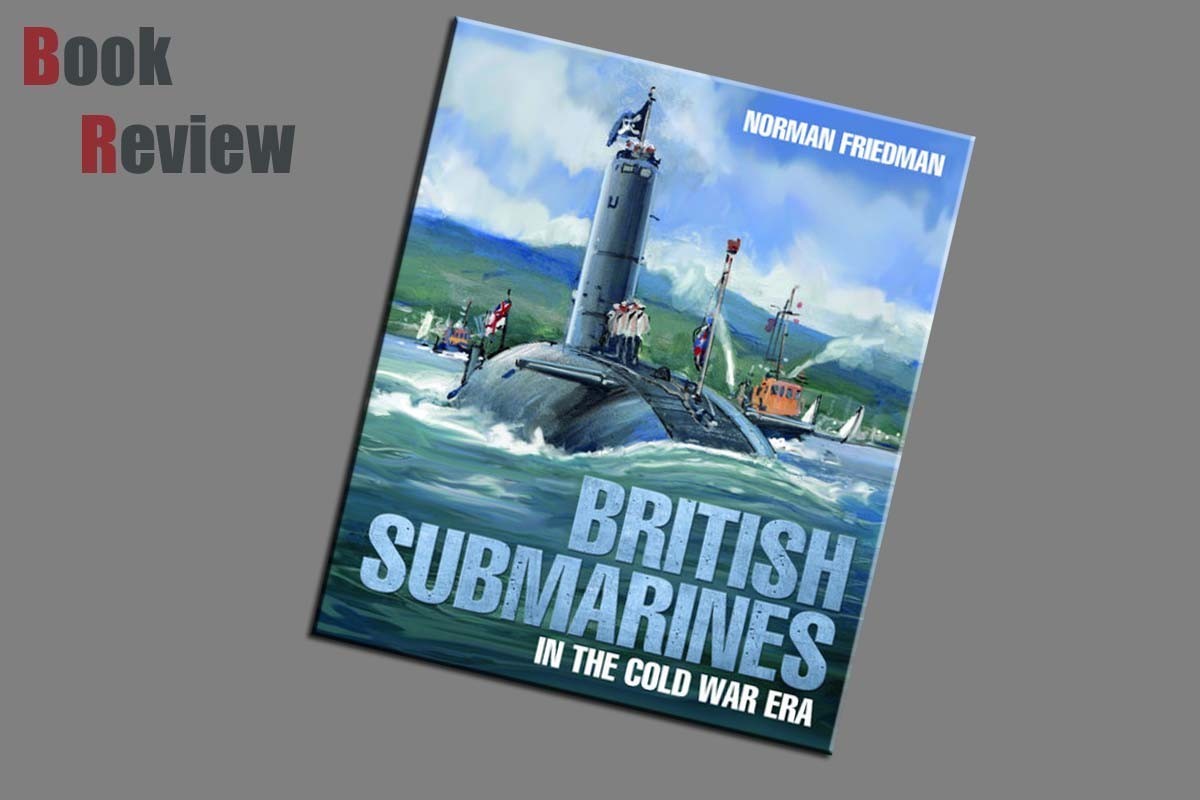
Introduction
The following introduction is taken from the Pen and Sword website:
The Royal Navy’s greatest contribution to the Allied success in World War II was undoubtedly the defeat of the U-boat menace in the North Atlantic, a victory on which all other European campaigns depended. The underwater threat was the most serious naval challenge of the war so it was not surprising that captured German submarine technology became the focus of attention for the British submarine service after 1945. It was quick to test and adopt the schnorkel, streamlining, homing torpedoes and, less successfully, hydrogen-peroxide propulsion. Furthermore, in the course of the long Atlantic battle, the Royal Navy had become the world’s most effective anti-submarine force and was able to utilise this expertise to improve the efficiency of its own submarines.
However, in 1945 German submarine technology had also fallen into the hands of the Soviet Union and as the Cold War developed it became clear that a growing Russian submarine fleet would pose a new threat. Britain had to go to the US for its first nuclear propulsion technology, but the Royal Navy introduced the silencing technique which made British and US nuclear submarines viable anti-submarine assets, and it pioneered in the use of passive – silent – sonars in that role. Nuclear power also changed the role of some British submarines, which replaced bombers as the core element of British Cold War and post Cold War nuclear deterrence.
As in other books in this series, this one shows how a combination of evolving strategic and tactical requirements and new technology produced successive types of submarines. It it is based largely on unpublished and previously classified official documentation, and to the extent allowed by security restrictions, also tells the operational story – HMS Conqueror is still the only nuclear submarine to have sunk a warship in combat, but there are many less well known aspects of British submarine operations in the post-war era.
Although some of the Cold War activities of British submarines have come to light in recent years, this book will be the first comprehensive technical history of the submarines themselves, their design rationale, and the service which operated them.
Review
This release from Seaforth publishing is a hard backed book, authored by Norman Friedman. The book contains 344 pages of a gloss stock paper, which is stitched into the cover - which I always consider a sign of quality. The contents of this book are provided as follows:
List of Abbreviations
Acknowledgements
1 RN Submarines after 1945
2 Year Zero 1945
3 Sonar and Sound in the Sea
4 Interim Submarine Conversions:
Colour Gatefold, between 80 and 81
The Fast Battery Submarine
6 The HTP Adventure
7 Going Nuclear
8 The Strategic Submarine
Black and white gatefold 136/137
9 New Generation Nuclear Attack Submarines
10 Reviving the Diesel Submarine
11 British Cold War Submarines in Action
12 After the Cold War
Appendix A British Submarine Sonars/Asdics
Appendix B Command and Control Systems
Appendix C Submarine Weapons
Appendix D Midget Submarines
The Silent Service by their very nature do not shout about their presence, and are rarely seen. This offering from Norman Friedman gives the reader an in-depth look at the innovations the Royal Navy made to their submarine force from their experiences fighting the German U-boat menace during WWII. These were followed by the introduction of the nuclear powered fleets, thanks to the US Navy whom I suspect also benefited from the British intelligence as the US and UK militaries tend to work hand in glove.
The text in this offering from Seaforth Publishing is well written and uses an easily read font and a letter size makes for a easily seen content. The text takes the reader on a steady progression of the Royal Navies submarine force, and the advances made since the end of WWII, which all results in a very informative read of a good depth. Some of the information by its very nature, talks about aspects that the reader will not necessarily understand, such as the use of abbreviations and the author has thoughtfully included a list of used abbreviations in order that the reader can enlighten themselves.
In addition to the text, the author has richly embellished the pages of this offering with photographs and diagrams, including fold out sheets providing you with an in depth look at the layout, of submarines of the Royal Navy that are no longer in service, as an example HMS Onyx. These fold out sheets provide the viewer with a logistical look at the problems of fitting all of the systems, required for the submarines role and remembering that the crew need to eat, sleep and work inside these cramped tubes, and potentially fight a war. The photographs offered are all black and white, and are provided with well written captions, that add context to the image. And I found the cross-section diagrams particularly interesting.
Conclusion
This offering from Seaforth Publishing, authored by Norman Friedman, provides the reader with an informative, and rounded look at the submarines of the Royal Navy post WWII. The benefits learnt from fighting the U-Boat force is well explained, and the advances in Royal Navy submarines, that help protect them from the methods used to seek out and destroy U-Boats. For anybody interested in submarines, as a machine of war this book is a must have, as the UK was one of the leading lights in development and use of submarines as weapons of war and their collaboration with the US Navy has paid huge dividends for both countries.
